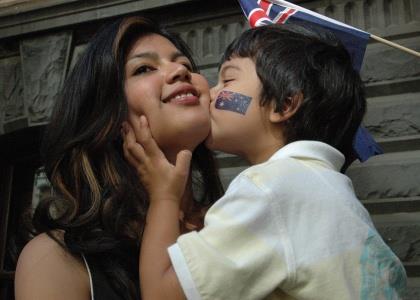
A report by the Australian Bureau of Statistics highlights how the Australian society has changed over 200 years and it reveals that the face of modern-day Australia has been shaped by the country’s migrant population.
Some of the key facts about Australia’s population development since it became an independent nation in 1901 and how migrants have played a major part in that story, according to the Australian Bureau of Statistics:
• Since Federation in 1901, Australia’s population has increased over five fold, growing from a total population of nearly four million to reach 22.3 million in 2011. A growth rate is attributed to increased life expectancy of the Australian population and the introduction of the country’s migrant population.
• Currently 85% of the Australian population live in urban areas where work, healthcare and infrastructure is some of the best in the world. In 1911 only 60% of the population chose to live in Australian cities.
• Migrant activity between 1911 and 1945 resulted in Sydney’s population growing by more than 800,000 people, to 1.5 million, becoming Australia’s most populated city. Between 2001 and 2011, Brisbane’s population increased by 27%. This means that Brisbane is the country’s fastest growing Australian capital in the 21st century.
• 27% of the current Australian population were not born on Australian soil, but have migrated to the country. This is the highest proportion since Federation.
• When Australia ended its White Australia Policy in in 1973, Australia’s immigration policy was broadened to include more nationalities in its immigration stream. With Australia now welcoming migrants from all parts of the world, it significantly developed Australia’s diversity to what it is today.
• Australia has been actively promoted to foreign nationals who could contribute to the county’s success, including through the Skilled Migrant Visa programme. Australia identified that their own skill shortage would stunt the country’s growth and the Federal Government started looking abroad to fill skills gaps in the Australian market. This has attracted educated and skilled migrants to live and work in Australia where their skills and experience have been employed for the greater good of the country.
• Due to a strict and thorough application and visa process, migrants who are selected to receive an Australian visa are often high calibre workers with specialized skill sets and experience benefiting the Australian job market. Migrants undergo language testing and deliver proof of a clear criminal record before being granted a visa, attesting to their quality of character.
• Migrants are committed to their employer and their community as they seek to extend temporary visas making the majority loyal, trustworthy and ambitious employees, thereby positively contributing to the Australian economy.








 Explore top-rated compensation lawyers in Brisbane! Offering expert legal help for your claim. Your victory is our priority!
Explore top-rated compensation lawyers in Brisbane! Offering expert legal help for your claim. Your victory is our priority! 

 "
"


